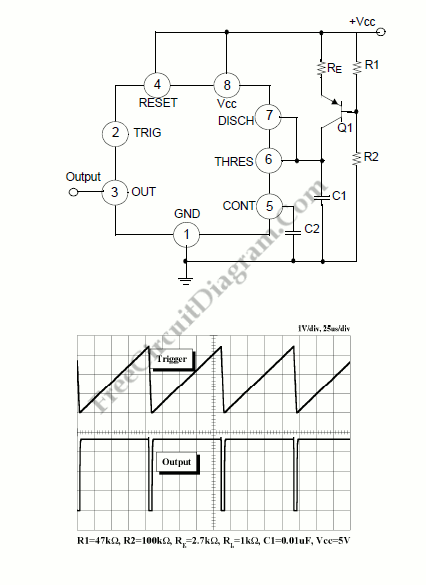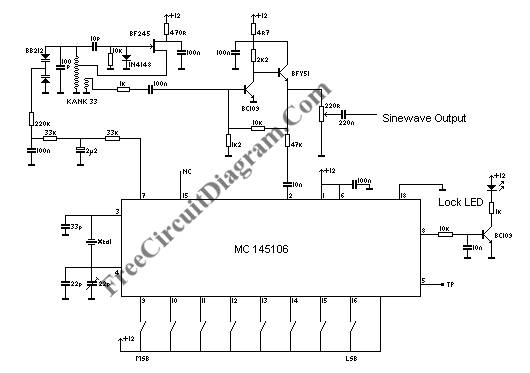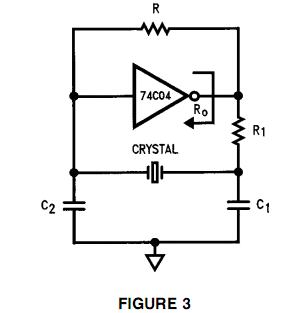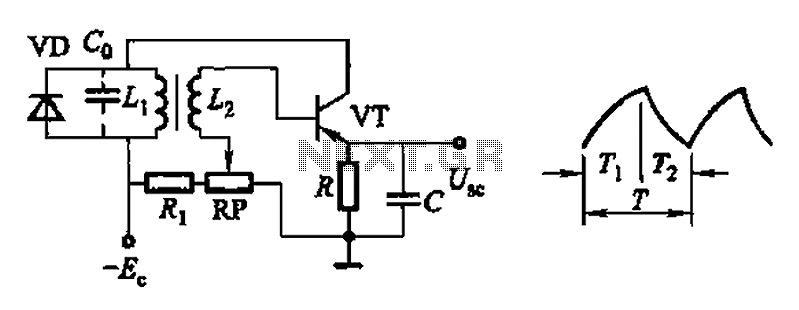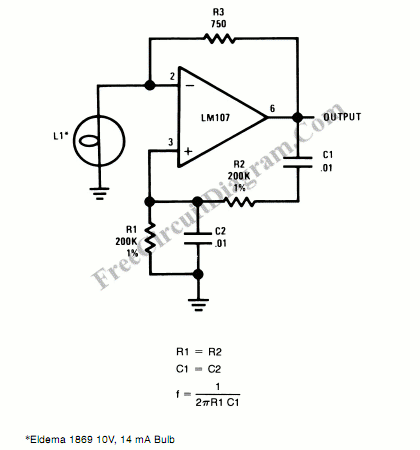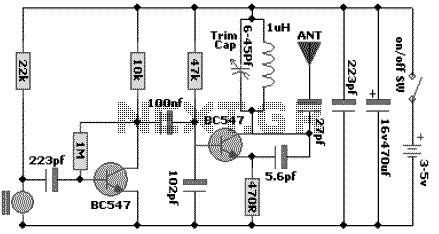
Low-Frequency Lc Oscillator
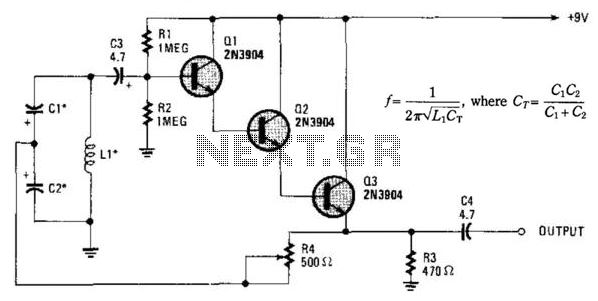
Essentially, this is a Hartley oscillator utilizing a triple-emitter follower, suitable for audio and low radio frequencies. The frequency is determined by the components, and at 1 kHz, a typical capacitor value would be 4.7 µF tantalum, although this serves merely as a guideline for convenient component selection.
The Hartley oscillator is a type of LC oscillator that generates sine waves and is characterized by its use of an inductor-capacitor (LC) tank circuit. In this configuration, the triple-emitter follower serves as an amplifier stage, providing high input impedance and low output impedance, which is beneficial for driving subsequent stages or loads without significant signal loss.
The frequency of oscillation (f) for a Hartley oscillator can be expressed by the formula:
\[ f = \frac{1}{2\pi\sqrt{L_{total}C}} \]
where \( L_{total} \) is the total inductance of the two inductors used in the circuit, and \( C \) is the capacitance of the capacitor in the tank circuit. The inductance values can be adjusted to achieve the desired frequency, along with the capacitor value, which in this case is suggested to be around 4.7 µF for operation at 1 kHz.
In practical applications, the choice of components can affect the stability and performance of the oscillator. Tantalum capacitors are preferred in this scenario due to their stability and reliability at low frequencies. The use of a triple-emitter follower configuration allows for better thermal stability and improved linearity in the output waveform, which is crucial for audio applications.
Additionally, it is important to consider the power supply requirements and the overall circuit layout to minimize noise and interference, ensuring a clean and stable oscillation. Proper bypassing and decoupling techniques should be employed to maintain signal integrity throughout the circuit. This oscillator can be effectively used in various audio applications, including signal generation, tone generation, and modulation tasks, making it a versatile choice for electronic design projects. Basically a Hartley oscillator using a triple-emitter follower, this oscillator can be used at audio and low ra dio frequencies. The frequency is given by: At 1 kHz, typically C would be 4.7 ¥ tantalums, but this is only a guide as to convenient values to use.
The Hartley oscillator is a type of LC oscillator that generates sine waves and is characterized by its use of an inductor-capacitor (LC) tank circuit. In this configuration, the triple-emitter follower serves as an amplifier stage, providing high input impedance and low output impedance, which is beneficial for driving subsequent stages or loads without significant signal loss.
The frequency of oscillation (f) for a Hartley oscillator can be expressed by the formula:
\[ f = \frac{1}{2\pi\sqrt{L_{total}C}} \]
where \( L_{total} \) is the total inductance of the two inductors used in the circuit, and \( C \) is the capacitance of the capacitor in the tank circuit. The inductance values can be adjusted to achieve the desired frequency, along with the capacitor value, which in this case is suggested to be around 4.7 µF for operation at 1 kHz.
In practical applications, the choice of components can affect the stability and performance of the oscillator. Tantalum capacitors are preferred in this scenario due to their stability and reliability at low frequencies. The use of a triple-emitter follower configuration allows for better thermal stability and improved linearity in the output waveform, which is crucial for audio applications.
Additionally, it is important to consider the power supply requirements and the overall circuit layout to minimize noise and interference, ensuring a clean and stable oscillation. Proper bypassing and decoupling techniques should be employed to maintain signal integrity throughout the circuit. This oscillator can be effectively used in various audio applications, including signal generation, tone generation, and modulation tasks, making it a versatile choice for electronic design projects. Basically a Hartley oscillator using a triple-emitter follower, this oscillator can be used at audio and low ra dio frequencies. The frequency is given by: At 1 kHz, typically C would be 4.7 ¥ tantalums, but this is only a guide as to convenient values to use.
